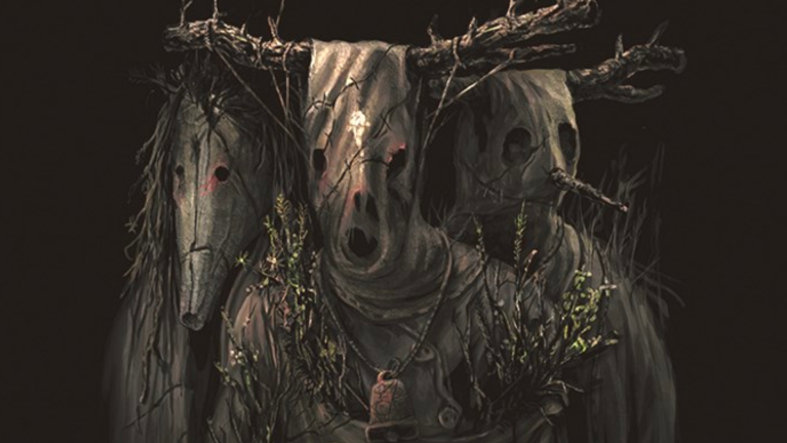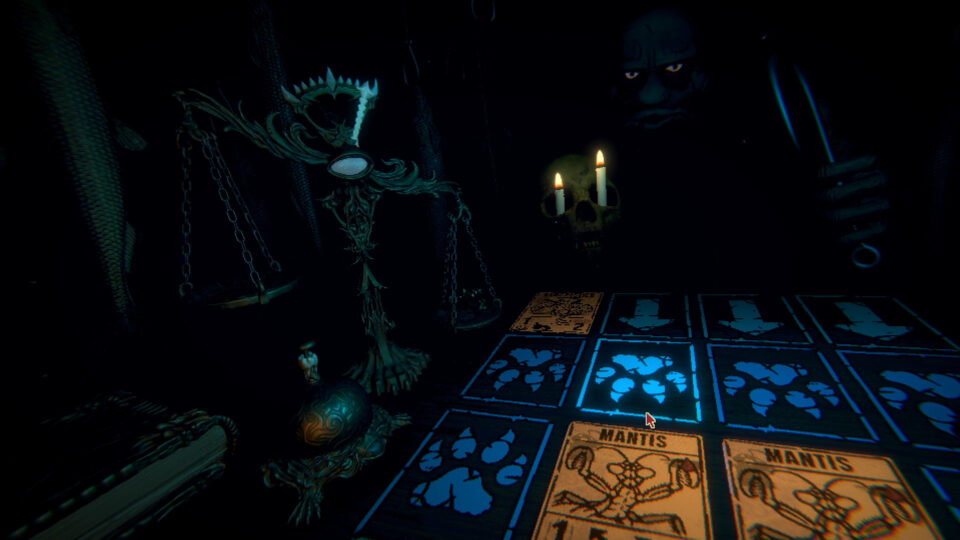The Recursive Terror and Horror of Roguelikes

The nightmares where you wake up only to realize that you’re just stuck in another dream. The endless cycle of death and violence only ends when the player’s goal is achieved or they give up entirely. Such is the nature of roguelikes, a genre of video games characterized by their high difficulty level, permanent player death, and fantasy elements. This genre is not only addictive but also a fantastic framework for horror.
A Rogue Beginning
The father of all roguelikes, Rogue, captures the inherent horror in the genre. The character starts with the barest of essentials and must traverse a dark dungeon full of monsters. The player has no idea what’s coming, and when they inevitably die, they must start all over again.
Rogue is terrifying because it instills something into gamers that is rarely valued: their lives. Dying in a video game usually just meant a lower score or starting from a “checkpoint.” This is not the case in Rogue. Every weapon they obtain on a run, every bit of progress they make, every room they clear, every monster they slay, all of it becomes worthless after a single death.
Savepoints didn’t exist at the time, but Rogue was unique in that it didn’t even provide “passwords” or “chapter skips.” For one thing, it literally couldn’t because it was one of the first games to use random procedural generation. That meant the player couldn’t even memorize the “perfect route,” ensuring every run kept the player on their toes.
Unfortunately, narratives weren’t a thing in those halcyon days of video game development. All the player had to do was retrieve the Amulet of Yendor at the bottom of the dungeon and then ascend to the surface. Once that’s done, the game ends with the character selling all their loot and joining the Fighter’s Guild. It’s not exactly a riveting story, but Rogue’s the father of all roguelikes, so it deserves to catch a break.
The Contemporary Roguelike
Thankfully, future games give players a bit more narrative meat to bite into. Inscryption starts the player off in a dark room. In front of them is an old wooden table with a card game laid out. Across the table, bright orange eyes pierce the player, and a voice beckons you to start playing. Gnarled, rotting hands are the only indication that the insidious voice even has a body attached to it. Inevitably, the player will lose the card game, at which point the mystery man reaches out their hands to grab them.
Before they die, the player sees the mysterious figure hold up a camera and is told to create a “memento.” As bright white flashes across the screen, the player is taken back to the table. With the mystery man hoping you do better than “the last one.” The player will eventually get the “memento” as an overpowered card to aid them in their escape.
The gameplay loop is essentially like the movie The Black Phone. You are just another victim in a long line of previous victims. Their “ghosts” leave behind “mementos” to aid the victims after them, to break the cycle of death. Death isn’t cheap in Inscryption. On the contrary, it’s a valuable asset. Morbidly, the more people die, the higher the chances of survival for the person after them.

There is far more to Inscryption than its roguelike elements. That said, the game’s usage of those elements to progress the narrative is a hell of a leap from the days of “Amulet of Yendor.” The nature of roguelikes rewards failure with knowledge. What Inscryption does differently is take that to its extreme by acknowledging within the narrative how many deaths it took to finish the story. To reach the summit, you have to climb over a mountain of corpses.
Deadly Aesthetics
Speaking of corpses, let’s talk about the aesthetic of horror roguelikes. Games like Darkwood and Darkest Dungeons emphasize the rot that builds with each playthrough. While they aren’t necessarily horror games, they do feature heavy horror elements in their design to immerse the player into the grim setting.
Darkwood’s roguelike elements, paired with its unique Slavic setting, put the player in the shoes of those classic European horror folklore. Dark forests of endless night, where monsters loom behind every tree branch, it’s essentially every survival game you’ve played on Lynchian steroids.
Darkest Dungeons is similar to Inscryption, only instead of playing the victims, the player takes on the role of the “killer.” With an endless supply of peons at your disposal, the depths of your Ancestor’s mansion are revealed. The gothic style shows the grim determination it takes to see the impossible task through and how much it drains the adventurers cursed to do so.
Even goofier multiplayer roguelites such as Phasmophobia and Lethal Company stick to that dark aesthetic. Liminal spaces, worlds solely populated by hostiles, and a hilarious lack of care for human lives go part and parcel with the roguelike experience.
And Then There’s Fear & Hunger
Personally, I found that no game better captures that feeling of dried blood on your forehead from repeating wall bashings than Fear & Hunger. While Fear & Hunger isn’t a traditional roguelike, it does share a lot of the same DNA. Death means starting over; there are random dungeon setups per run, and it emphasizes failure as a way to learn more about the game’s gimmicks. It’s also one of the most cruel games you can ever play.
Everything within the ancient fortress is bathed in a sickly light. The player characters are all grim-faced and pale, showing barely any emotion. Far from making the setting less intimidating, this apathy communicates how desensitized the characters have become to their plight. The enemies are all grotesque monstrosities, so malformed that they couldn’t be mistaken for anything truly “human.”
Whereas failure in Inscryption can be somewhat viewed as a heroic act, there is no such thing as Fear & Hunger. Dying in Fear and Hunger does not provide the player with a tangible benefit on the next run other than the knowledge of “don’t die this way again.” Meanwhile, your character is treated to a slow and horrific death. The failure is not acknowledged on the next run at all, and rarely is there any narrative meaning to be gained from it. It’s a pointless and cruel death in an uncaring, horrible world.
Fear & Hunger’s recursive nature lives and dies by the player’s capacity to withstand its cruelty. The satisfaction from Fear & Hunger is earned through blood, sweat, and tears. Things that Fear & Hunger. will gladly wring out of the player as much as possible.
The morbid harmony between horror and roguelikes is a fantastic example of how innovative both genres can be. Dying is scary enough by itself. Dying over and over again bridges the gap from sudden terror to existential dread. It is even better when those feelings are baked into the games’ narratives. I’m excited to see just how far horror can be pushed in the interactive medium, particularly in how awful it can make me feel.
Categorized:Editorials Horror Gaming

